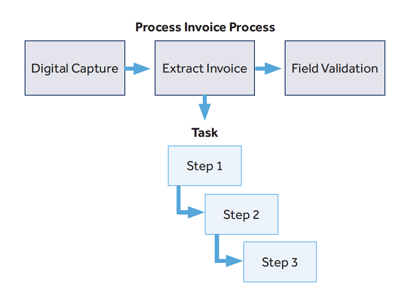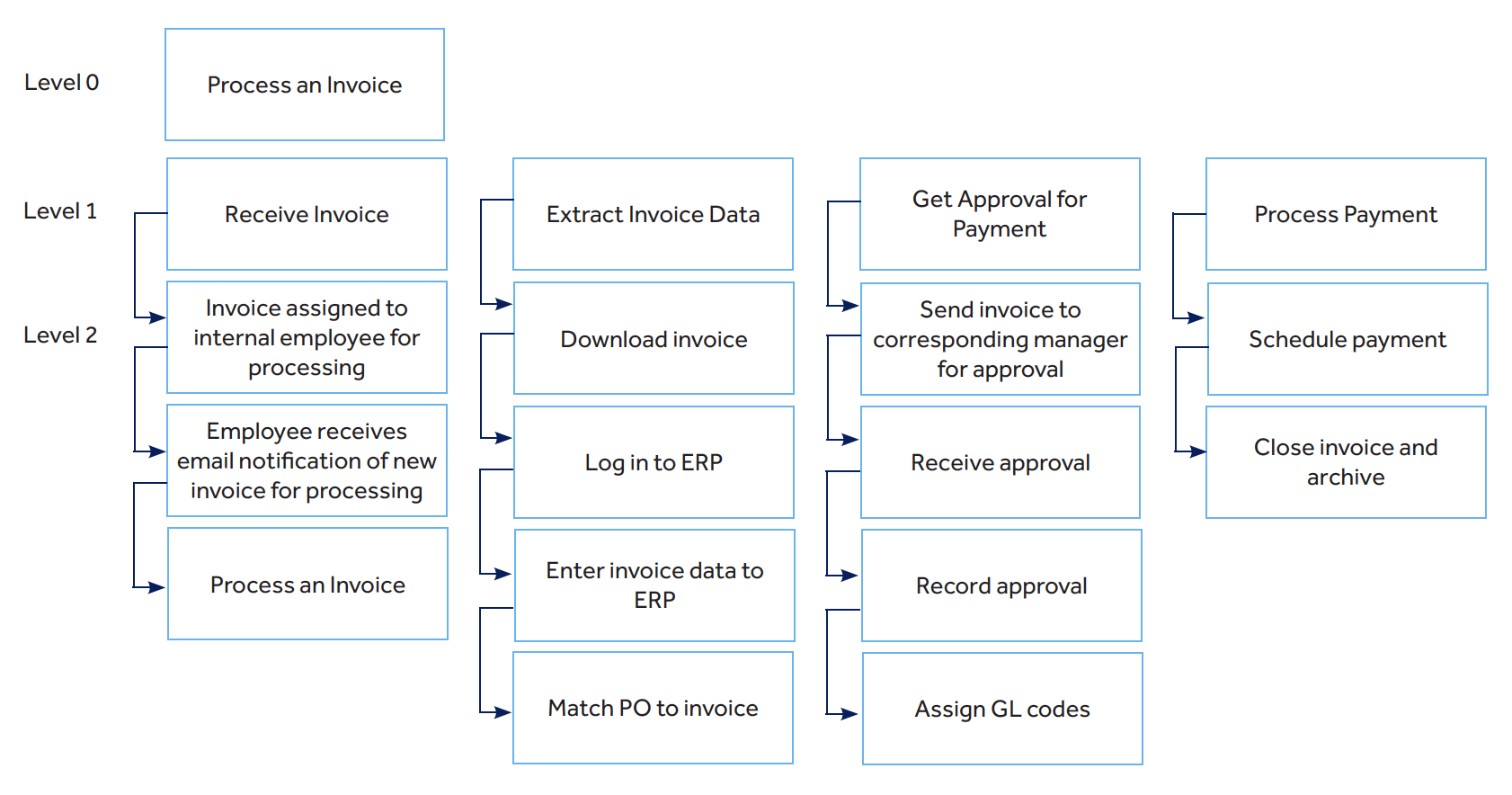Process Decomposition: Why It’s So Important
The most essential principle of continuous process improvement is defining how work is being done. That means high-quality process mapping and modeling.
Every business process is made up of a myriad of sub-processes and tasks. That’s why process decomposition – breaking a business process down into all of the sub-processes that constitute it – is so important.

What is Process Decomposition?
Process decomposition is the practice of documenting all the sub-processes and tasks that make up a higher-level business process. For example, take a seemingly simple business like processing an invoice.
Processing an invoice is made up of several sub-processes and tasks involving multiple actors, actor actions, handoffs, system interactions, etc.
In this process decomposition diagram, processing an invoice can be decomposed into four sub-processes:
- Receiving an invoice
- Extracting data from that invoice
- Getting approval for payment
- Processing payment
 The more complex a process is, the more levels and sub-processes it will contain.
The more complex a process is, the more levels and sub-processes it will contain.
Why is Process Decomposition Important?
Decomposing a process into all of its granular levels is incredibly important for several reasons:
1. Better Decision-Making and Business Process Analysis
Under a continuous improvement lens, business process decomposition is important because it delivers the insight needed to make informed decisions when considering the right process improvement strategies to apply.
Before deciding how best to improve your processes, you need to analyze your business processes and determine where there are inefficiencies, where they are error-prone, and where there might be waste.
There is no way to do that without first having a clear and accurate picture of what that process and all of its sub-processes look like.
2. Improved Automation Candidate Identification
Automation is one process improvement strategy that an organization may want to apply to improve their workflows in terms of higher efficiency and cost reduction.
Business process decomposition is so integral to automation because it’s not the end-to-end business processes that are automated—it’s the sub-processes and tasks of those higher-level processes that are converted into bots.
Without process decomposition, finding automation candidates and knowing what to automate is like trying to find a needle in a haystack and will most likely elicit the same success rates.
3. Enhanced Process Simulation and Predictive Analytics
Adding quantitative values to your processes is critical in understanding where your processes need attention and modifications.
To quantify the value of your processes, you need to decompose them into fine, granular detail, so every sub-process and process step – where appropriate – can have a value applied to it. Only then can you simulate and predict where the process needs to be changed and what modifications will yield the desired improvements.
Typical values you can plug into your business processes for simulation and predictive analytic purposes include:
- Resources – number of employees performing the process or the stakeholders responsible for executing the process
- Inputs – fields, forms, text, or any other variables that are fed into the process
- Outputs – what the process produces
- Execution time – the total time it takes to complete the process or process step, including delays and lead time
- Processing time – the time it takes an employee to complete the process or a specific step of the process without taking lead time and delays into account
- Decision points – the number of points throughout the process where a decision needs to be made
For more detailed examples on how to decompose processes, where and what types of values to enter to quantify your processes and even a free template to get you started, download the Process Decomposition Template for free!
Share this
Recent Stories

3 Reasons Why Integrations Are So Important for Business Process Analysis

What is EBPA (Enterprise Business Process Analysis)?



